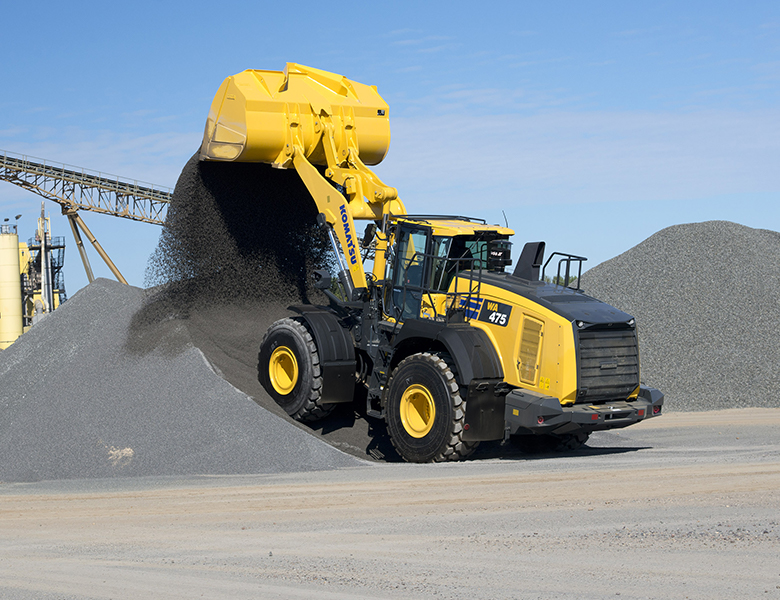
After strong growth in the first quarter of 2019, the Italian construction market saw a downturn in Q2, followed by a modest recovery in the third quarter (0.2%), thanks in particular to the residential sector.
Despite this weak performance in the second and third quarters, an industry survey published in December 2019 by SaMoTer-Prometeia Outlook estimated that overall growth for construction investments in 2019 averaged 3.3% in Italy, due to the strong figures for the first three months of the year.
This uneven performance in the construction sector had created an uncertain outlook for the Italian aggregates and quarrying industry, even before the 2020 COVID-19 pandemic led to the government ordering the entire country being placed under quarantine on March 9.
Data from Italy’s official statistics body Istat found that the quarrying and mining industry performed the worst out of 16 industry sub-sectors in 2019, amidst an overall 4.9% year-on-year fall in industrial output.
The latest aggregates production data available from European aggregates association the UEPG shows Italy as being among the three lowest countries in Europe in terms of tonnes per capita (t/c) with less than 3t/c in 2017. Italy was predicted to show an increase in tonnage for 2018 of around 1%.
The Italian quarrying sector has a large amount of generally small operators with 1,120 producers and 2,800 extraction sites, according to the UEPG. The biggest product is crushed rock (91 million tonnes produced in 2017), followed by sand and gravel (65 million tonnes), and recycled aggregates (four million tonnes) giving a total overall production of 160 million tonnes a year, the seventh largest figure among the UEPG’s 39 member countries.
Crushing and screening attachment manufacturer MB Crusher says it sees opportunities for its products in Italy arising from the need to make the most of all available material, which has prompted astute quarry operators to use also the waste material which once was simply piled up, thrown away or sent for waste disposal.
One operator is using an MB Crusher BF135.8 bucket, fitted to a Hyundai Robex 500 LC-7 excavator, to recycle material at a marble quarry in Carrara. Previously waste from the site was sent to a large recycling centre which incurred high transportation and disposal costs. The operator was not allowed to use mobile or fixed crushers at the quarry so they started using the BF135.8 to crush the material directly on-site. The crushed material is used for maintenance of the quarry and other projects outside the quarry site.
The company adds: “Our crusher and screening buckets can process all extracted material, in order to render it re-usable directly on-site. The precision of production allows for materials which were previously destined solely for disposal to be processed in calibrated batches, which can be re-sold or re-used on-site, thus leaving the mineral balance of the quarry unaltered.”
Veronafiere, organiser of the SaMoTer earthmoving and building machinery event, said its December 2019 construction market data for Italy points to continuing underinvestment following the 2008-2009 global financial crisis.
The Italian construction equipment sector – which is the fourth biggest in Europe and accounts for 7% of sales in the region behind Germany, France and the UK - had a relatively strong 2019 compared with other southern European nations such as Spain, according to data from domestic construction equipment association UNACEA. Construction equipment sales were up by 16% on 2018, with earthmoving equipment sales increasing by 15%. The growth was driven by replacement of obsolete fleet and incentives laws according to UNACEA, which says the Italian construction equipment market is at 50% of the record levels reached pre-2008/9 financial crisis.

Italy showed growth in construction equipment sales in all four quarters of 2019, according to data from European construction equipment association CECE, with three of the quarters seeing double-digit year-on-year percentage increases.
“The Italian construction equipment market was stable in 2019,” according to Sebastien Popp, secretary of CECE’s statistical commission. “Growth in Italy was above the European average.”
CECE’s 2020 annual economic report, completed before the nationwide quarantine was introduced in Italy, predicted that the Italian construction sector would grow by 2.1% in 2020. However, CECE said during the online launch of the report that the onset of COVID-19 will “pulverise any predictions”. Popp commented on the current landscape: “Situations change on a daily basis, so any forecasts now would not be reliable at all.”
Overall investments in the Italian construction sector came to more than €139bn in 2018, according to estimates by the SaMoTer-Prometeia Outlook, and it estimates a further increase of 3.3% for 2019, worth around about €4.5bn.
Residential building was sustained by investments to upgrade the housing stock, in association with renovation requirements and benefits arising from tax incentives. New homes played a less important role, given the 0.9% fall in building permits in the first quarter of 2019.
The real estate market posted a positive trend with transactions on the residential market increasing at a higher rate (5%) in the third quarter of 2019 than in Q2.
The trends were more diversified in the non-residential market. The tertiary commercial segment saw strong growth (+7.4% compared to previous quarters), but the negative trend continued in the production sector with a fall of 0.9% in Q3. Despite this context of general recovery in transactions, house prices have not yet completely stabilised and actually posted a further slight downward trend in the second quarter (-0.2%), especially for existing homes, compared to an increase in the new housing segment.
The public works market confirmed the positive trend seen since 2017: the first nine months of 2019 saw an increase of 4.7% in the number of tenders published and even more significant growth (25.1%) in the value of tenders.
The impact of the COVID-19 pandemic on the country has led to Italy so far being one of only three European nations to have shut down virtually all construction activity (with Spain and Luxembourg being the others). Prime Minister Giuseppe Conte also issued a decree on March 20 ordering the immediate closure of most manufacturing activities in Italy as a measure to fight the spread of COVID-19.
Cement manufacturer Italcementi was among those to comply, suspending production activity at its plants. Aggregates machinery manufacturers contacted by Aggregates Business Europe who have production facilities in Europe were also stopping production.
HeidelbergCement subsidiary Italcementi said its offices had already been operating in “smart-working mode” for three weeks, adding that its branches in Bergamo will be closed indefinitely, controlled by surveillance and security staff.
Cement production equipment company FLSmidth has temporarily closed down its production in Lombardy.
Another victim of COVID-19 is SaMoTer, Italy’s premier international construction and logistics trade show, originally due to take place in March and which has now been rescheduled twice, initially to 16-20 May and now to 21-25 October.
The international construction equipment trade fair and its co-located events (bitumen and road infrastructure show Asphaltica and the precast exhibition conference ICCX Southern Europe) take place every three years on the Veronafiere site in Verona, northern Italy.
These events will now be held alongside Oil&nonOil, the energy, fuel and mobility services trade fair scheduled for 21-23 October.
Giovanni Mantovani, CEO of Veronafiere, commented: “We continue to monitor the scenario, together with the steering committee involving companies, partners and associations such as Unacea and Siteb which co-organises Asphaltica with us.
“The new postponement agreed upon is consequently the result of real-time listening to the market and careful assessments. We took into account the need to ensure safety in health terms and safeguard the important investments planned by companies taking part. This unity of intent with stakeholders once again highlights the sector’s confidence in the capacity of the trade fair system to support it and be a tool for relaunching the sector, even in times of great crisis such as those we are currently experiencing.”
The organisers said the October dates are also the best option as regards the seasonal work needs of the reference supply chains, which are concentrated in summer.
*UEPG-Aggs-Production-2017
| UEPG Status | Total number of producers (companies) | Total number of extraction sites (Quarries & Pits) | Sand & Gravel | Crushed Rock | Marine Aggregates | Recycled Aggregates | Re-Used on Site | Manufactured Aggregates | Tool Production |
| AM (Million Tonnes) | 1120 | 2800 | 65 | 91 | 0 | 4 | 0 | 0 | 160 |







